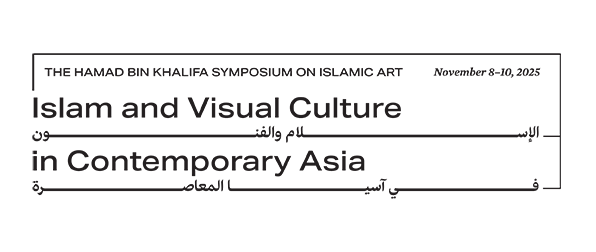Panel 1: Reading, Writing, and Picturing the Muslim Port City: Architecture and Urbanism around the Indian Ocean Littoral after 1500

Panel Chair: Nancy Um is Professor of Art History and Associate Dean of Harpur College, Binghamton University. Her research explores the Islamic world from the perspective of the coast, with a focus on material, visual, and built culture on the Arabian Peninsula and around the rims of the Red Sea and the Indian Ocean. She is the author of The Merchant Houses of Mocha: Trade and Architecture in an Indian Ocean Port (Seattle: University of Washington Press, 2009) and Shipped but not Sold: Material Culture and the Social Protocols of Trade during Yemen’s Age of Coffee (Honolulu: University of Hawai’i Press, 2017).
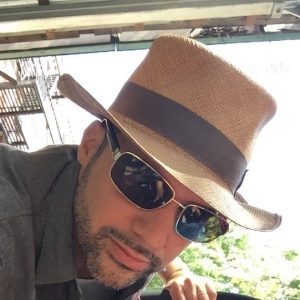
Eric Beverley is Associate Professor of History at State University of New York, Stony Brook, where he teaches courses on South Asia, the Muslim world, colonial and postcolonial studies, and other topics. His research on modern and early modern South Asia and the Indian Ocean world examines topics ranging from sovereignty and the making of the global state system; to law, crime, and borderlands; to transnational connections and urban change. His book, Hyderabad, British India, and the World: Muslim Networks and Minor Sovereignty, c. 1850-1950, was published by Cambridge University Press (UK, 2015; India, 2016).

Prita Meier (PhD, Harvard University) is Associate Professor of African Art History at New York University. Her research focuses on the visual cultures and built environment of east African port cities, and she explores histories of transoceanic exchange and conflict. She is the author of Swahili Port Cities: The Architecture of Elsewhere (2016), co-editor of World on the Horizon: Swahili Arts Across the Indian Ocean (2018), and has publications in The Art Bulletin, Art History, African Arts, Nka: Journal of Contemporary African Art, Artforum, and Arab Studies Journal, as well as contributions in several exhibition catalogs and edited books.
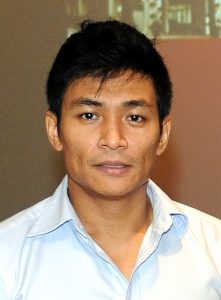
Imran bin Tajudeen researches architectural encounters in Singapore and Southeast Asia across the longue durée, through historiographical questions on Southeast Asia’s Indic and Islamic architecture, and in their intersections with colonial practices, modern interventions, and colonial and nationalist representational tropes in heritage representation. His work takes the vernacular architectural perspective and approach as its point of departure. His doctoral dissertation (National University of Singapore, 2009) on the architecture, urban histories and heritage issues of Southeast Asian cities won the International Convention of Asia Scholars Book (ICAS) Prize for Best Ph.D., Social Sciences in 2011.
Panel 2: Seas Imagined, Depicted, and Crossed in Middle Eastern Art, Maps and Geography
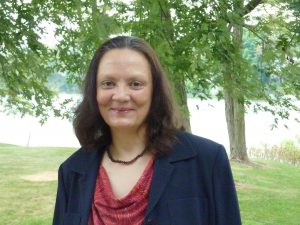
Panel Chair: Karen Pinto. Born and raised in Karachi, Pakistan, of Indian, Russian, and French-stock, educated at Dartmouth and Columbia, Karen Pinto, Associate Research Professor of the College of Innovation and Design at Boise State University, is into Islamic and Middle Eastern maps of all kinds and sizes. She specializes in the history of Islamic cartography and its intersections between Ottoman, European, and other worldly cartographic traditions and has spent the better part of two decades hunting down maps in Oriental manuscript libraries around the world. She has a 2000-strong image repository of Islamic maps—many that have never been published before. Her book Medieval Islamic Maps: An Exploration was published by The University of Chicago Press in November 2016 and won a 2017 OAT (Outstanding Academic Title) award from Choice. She has won numerous grants including a 2013-14 NEH fellowship for her work on Islamic maps of the Mediterranean. She has published articles on medieval Islamic and Ottoman maps and is working on books on “The Mediterranean in the Islamic Cartographic Imagination” and “What is ‘Islamic’ about Islamic Maps?” Along with her work on Middle Eastern and Islamic Studies, she is interested in Digital Humanities and Spatial Studies, and encourages students to contact her if they are interested in these subjects.
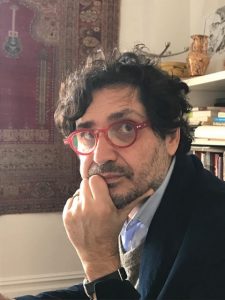
Avinoam Shalem is the Riggio Professor of the arts of Islam at the Columbia University in the city of New York. His main field of interest is in medieval artistic interactions in the Mediterranean, medieval aesthetics and the modern historiography of the field. He has published extensively on varied topics concerning intercultural exchanges within and between the world of Islam and Europe. His current book project critically explores the varied approaches of sculpturing and curating the rural landscape of Palestine since 1947.
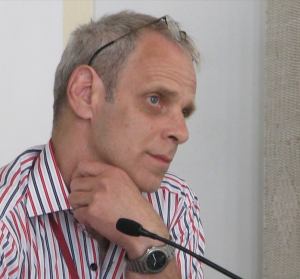
Imants Lavins (Ļaviņš) is Assistant Professor at the University of Economics and Culture in Riga, Latvia and a lecturer at the Centre of Indian Studies and Culture of the University of Latvia. He received his M.A. in Oriental Studies and afterward his Ph.D. in History in 2013, both at the University of Latvia. His research interests lie in the field of Islamic manuscripts and are linked with works of mathematical geography and cartography. These key interests have been featured and explored in his Doctoral dissertation, “Depiction of Scandinavia and Eastern Europe in Medieval Arabic and Persian Historical Sources.’’ His research has been published in Latvian, Russian and English and has been presented in conferences across Europe and Asia.
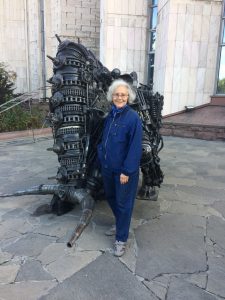
Marina Tolmacheva is President Emerita of American University of Kuwait and Professor Emerita of Middle East History and Islamic Civilization at Washington State University (USA). Her research interests include the history of Arab geography and travel, Arabic sources on Africa, and the transmission of scientific knowledge. Her publications number over 130 and include translations from Arabic and Swahili, “Intercultural Transmission and Selection: Greek Toponyms in Arab Geography” in Tradition, Transmission, Transformation (1996),;“Female Piety and Patronage in the Medieval Hajj” in Women in the Medieval Islamic World: Power, Patronage, and Piety (1998), and several articles on the great traveler Ibn Battuta (14th century).
Panel 3: Seas, Mobility, Gifting and Settlement: Islamic Art in 11th-14th Century Chinese Port Cities
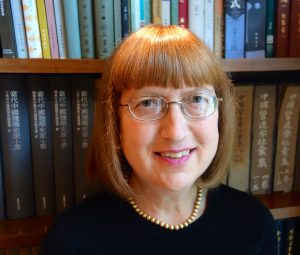
Panel Chair: Nancy S. Steinhardt is Professor of East Asian Art and Curator of Chinese Art at the University of Pennsylvania. She does fieldwork in China, Korea, Japan, and Mongolia. Steinhardt is author, co-author, or translator of eleven books and more than 100 scholarly articles. She a recipient of grants from the Guggenheim Foundation, Institute for Advanced Study, National Endowment for the Humanities, Center for Advanced Study in the Visual Arts, American Council of Learned Societies, Getty Foundation, Chiang Ching-kuo Foundation, Social Science Research Council, American Philosophical Society, Graham Foundation, Van Berchem Foundation, and Metropolitan Center for Far Eastern Art and has been an advisor, guest curator, or author for exhibitions at China Institute, Asia Society, the Metropolitan Museum, Japan Society, Chicago Art Institute, the Smart Museum, and the Penn Museum.
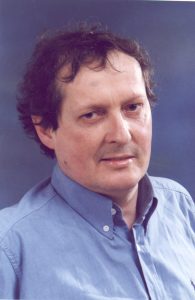
George Lane spent nearly twenty years traveling, working, and seeking adventure in various countries in the Middle East and other parts of Asia before returning in 1991 to his true vocation in academia at the School of Oriental and African Studies, London. After earning his doctorate in History in 2001, he published his first book closely followed by a further two titles, all on different aspects of the Chinggisid world. Most recently he has published a short history of the Mongols, a translation of Qutb al-Din’s history of early Ilkhanid Iran and a study of Hangzhou’s famous Persian mosque.
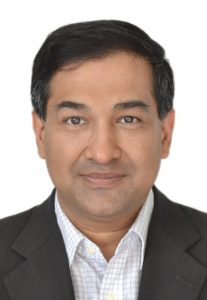
Tansen Sen is Professor of history and the Director of the Center for Global Asia at NYU Shanghai, and Global Network Professor at NYU. He received his MA from Peking University and Ph.D. from the University of Pennsylvania. He is the author of Buddhism, Diplomacy, and Trade: The Realignment of Sino-Indian Relations, 600-1400 (2003; 2016) and India, China, and the World: A Connected History (2017). He has co-authored (with Victor H. Mair) Traditional China in Asian and World History (2012) and edited Buddhism Across Asia: Networks of Material, Cultural and Intellectual Exchange (2014). He is currently working on a book about Zheng He’s maritime expeditions in the early fifteenth century and co-editing (with Engseng Ho) the Cambridge History of the Indian Ocean, volume 1.
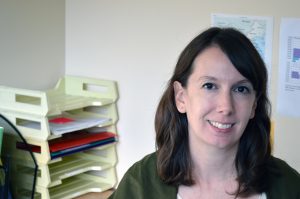
Eiren Shea is an Assistant Professor of Art History at Grinnell College, where she offers classes on arts of pre-modern Asia. Her research interests include the arts and visual cultures of China from the 10th-16th centuries, Asian textiles, and premodern cultural exchange in Asia. Her work has been published in The Textile Museum Journal, Arts Asiatiques, and Ming Studies. Her current book, Dressed in Gold: Mongol Court Dress, Identity Formation, and Global Exchange (ca.1200-1350) investigates the role of dress in the Mongol Empire and the impact of Mongol textiles on Asian and European art and society.
Panel 4: Pots that Talk: Mesopotamian Interconnectivity with the Indian Ocean and China Trade in the Early Islamic Period (8th-10th Centuries)
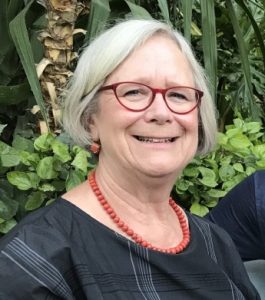
Panel Chair: Rosalind Wade Haddon is a Research Associate, SOAS, University of London with an MA in Islamic Art and Architecture from the American University of Cairo and a PhD in Islamic Art and Archaeology from the School of Oriental and African Studies, University of London. She has worked widely on different projects in the Middle East (Iraq, Jordan, Syria, Egypt and Yemen), participated in numerous conferences and contributed to different publications on Islamic ceramics. She is currently finishing a digitization project recording Herzfeld’s Samarra finds in the V&A and British Museum’s collections.
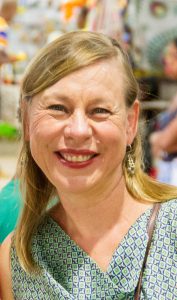
Jessica Hallett is the Curator of the Early Modern Middle East, Calouste Gulbenkian Museum, Lisbon. She received her doctorate in Islamic Art and Archaeology from Oxford University and her thesis inspired the exhibition, Iraq and China. Ceramics, trade and innovation, at the Arthur M. Sackler Gallery of the Smithsonian Institution, Washington, D.C. (2004). She has co-curated various exhibitions in Lisbon, including Cultures of the Indian Ocean (1998) and The Oriental Carpet in Portugal (2007 – awarded the Reynaldo Santos Prize). She has contributed to a diverse range of academic publications, as well as the book Mamluk Glass in the Calouste Gulbenkian Museum (2000) and De Todas Partes do Mundo, O Inventário do 5o Duque de Bragança, D. Teodósio I, c. 1563 (2018). She is currently curating an exhibition on The Rise of Islamic Art and Calouste Gulbenkian’s collecting activities in historical context (2019).

Moujan Matin is a Junior Research Fellow, Wolfson College and the Research Laboratory for Archaeology and the History of Art, University of Oxford. Her research interests focus primarily on the history of ceramics technology in the Near and Middle Eastern Civilizations and the cross-craft interactions between ceramic making, glass manufacturing and metallurgy. She holds a DPhil and an MSc in Archaeological Science from Keble College, University of Oxford and a BSc in Materials and Mining Engineering from the University of Tehran. Main research topics are: technological changes during the early and medieval Islamic periods; experimental replication; and historic scientific manuscripts.
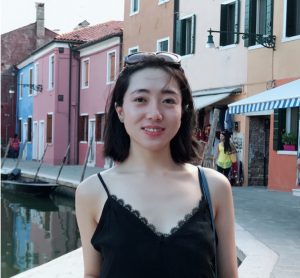
Wen Wen studied Arabic and world history at the University of Peking, graduating in 2014. She then transferred to University College, London studying for an MA in Asian Archaeology, achieving a distinction. Since 2015 she has been working towards a DPhil in archaeology at the University of Oxford, expecting to complete at the end of 2018. Her thesis is on Chinese ceramics from the Islamic World 8th-10th centuries CE.
Panel 5: Transoceanic Movement, Muslim-Centered Design, and Architecture in the Twentieth and Twenty-First Centuries
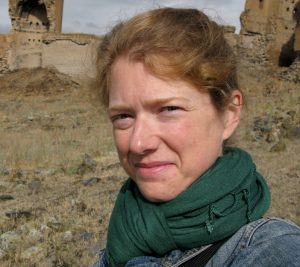
Panel Chair: Angela Andersen, PhD is a Fellow at the Centre for Studies in Religion and Society, University of Victoria. Andersen examines the inter- and intra-religious interactions that take place via the built environment, with a focus on the architecture of minority Muslim groups in the Islamic world. Her recent research and publications engage architectural case studies of these dynamics, including work with the Alevi Muslim communities in Turkey and in the European diaspora regarding the role of their ceremonial sites, known as cemevis. She completed a Postdoctoral fellowship with the Aga Khan Program for Islamic Architecture at MIT in 2017, and is currently a fellow at the Centre for Studies in Religion and Society at the University of Victoria.
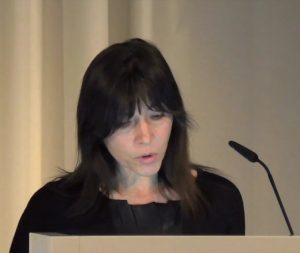
Esra Akcan is an Associate Professor in the Department of Architecture at Cornell University and the Director of the Cornell Institute for European Studies. She completed her architecture degree in Turkey, and her Ph.D. and postdoctoral degrees at Columbia University. Akcan received awards and fellowships from the American Academy in Berlin, Institute for Advanced Studies in Berlin, Clark Institute, Getty Research Institute, Canadian Centre for Architecture, CAA, Mellon Foundation, and KRESS/ARIT. She is the author of Architecture in Translation: Germany, Turkey and the Modern House (2012); Turkey: Modern Architectures in History (with S. Bozdoğan, 2012), and Open Architecture: Migration, Citizenship and Urban Renewal of Berlin-Kreuzberg (2018).
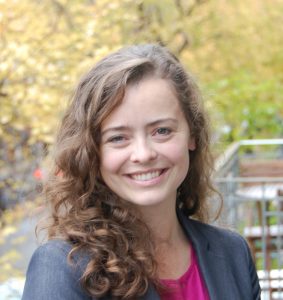
Sarah Moser is an assistant professor in the Department of Geography at McGill University in Montreal, Canada where she is the Director of the Urban Studies Program. She is interested in how religious and national ideologies are manifested in the built environment, particularly in state-driven urban mega-developments, and the social exclusions that result. Sarah has published articles in such journals as Urban Studies, Cities, Area, Social and Cultural Geography, Children’s Geographies, Dialogues in Human Geography, Geoforum, and Urban Geography. Her current book projects include co-editing the Research Handbook on Asian Cities (Edward Elgar, 2019) and New Master-Planned Cities, Islam, and Identity (Routledge, 2019).
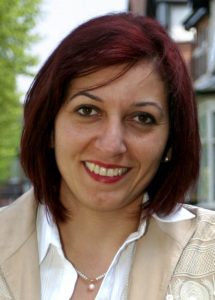
Noha Nasser is an urban design academic and the Founding Director of MELA Social Enterprise, with a mission to find creative solutions to the design and use of public spaces for bridging cultures. Her research examines changes to European cities by post-colonial immigration by South East Asians, particularly Muslims, who have claimed parts of the city for their own, as well as the architectural language of places of worship as a new European building typology. She is the author of Bridging Cultures: The Guide to Social Innovation in Cosmopolitan Cities and became a Fellow of the Royal Society for the Encouragement of Arts, Manufactures and Commerce in 2017.
Panel 6: The Ilkhanate and its Neighbors: Artistic Exchange, Overland Routes, and Maritime Trade, c. 1250-1400
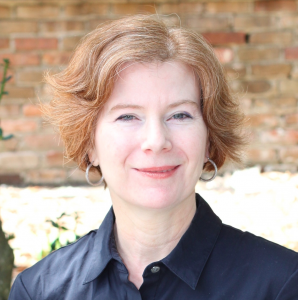
Panel Chair: Professor Anne Dunlop has held the Herald Chair of Fine Arts at the University of Melbourne since 2015. She is a specialist of early Italian art, with a research focus on the links between Italy and Mongol Eurasia. She is the author or editor of six books and numerous scholarly articles. Currently she serves as Vice-President for the Australian Delegation to the International Congress of the History of Art.
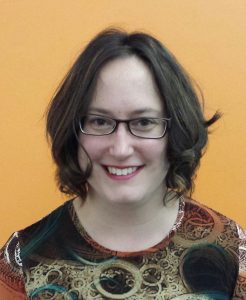
Dr. Heather Coffey is Assistant Professor of the History of Art at OCAD University in Toronto. She received her PhD in the history of art from Indiana University in 2012. Her research specialty is medieval Mediterranean art, encompassing themes related to Christian and Islamic cross- and intercultural relations. She has published articles concerning the spread of mi‘raj texts in translation and the efflorescence of illustrated manuscripts of Beatus of Liébana’s Commentary on the Apocalypse in Spain from c. 940–1250, and the devotional motivations for the miniaturization of Qur’anic and other religious texts within Islam.

Shane McCausland is Percival David Professor of the History of Art in the Department of History of Art & Archaeology and Head of the School of Arts at SOAS University of London. He was previously Head of Collections and Curator of East Asian Art at the Chester Beatty Library, Dublin. He read Oriental Studies (Chinese) at Cambridge University before undertaking his PhD in Art History with East Asian Studies at Princeton University, with a thesis on the Chinese artist and polymath Zhao Mengfu (1254-1322). His publications include The Mongol Century: Visual Cultures of Yuan China, 1271-1368 (Reaktion, 2015).
Panel 7: The South Asian Nexus: Objects, Motifs, and Materials in Transit
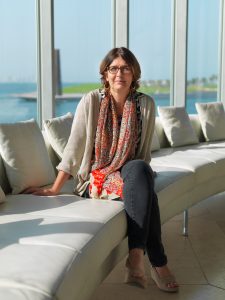
Panel Chair: Dr. Julia Gonnella is Director of the Museum of Islamic Art in Doha. She studied Islamic Art and Archaeology, Social Anthropology and Islamic Studies in London (SOAS), Cairo and Tübingen. From 2009 until 2017 she worked as curator at the Museum for Islamic Art in Berlin where she organised numerous exhibitions, such as Heroic Times – A Thousand Years of the Persian Book of Kings (2011), Masterworks from the Serail, The Albums of Heinrich Friedrich von Diez (2013), and How Islamic Art Came to Berlin: The Collector and Museum Director Friedrich Sarre (2015). One of her main research interests focuses on the medieval period in Syria where she excavated on the citadel of Aleppo. In 2018, she organised MIA’s 10th year anniversary show “Syria Matters” and is now leading the relaunch of MIA’s permanent galleries.
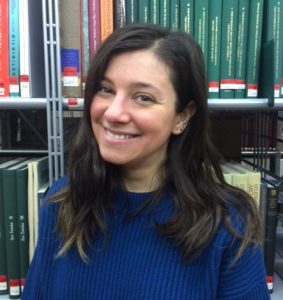
Nicoletta Fazio is Assistant Curator at the Museum of Islamic Art in Doha. An art historian by training, she studied Art History, Medieval Studies, and Islamic Art and Archaeology at the University of Genoa (Italy) and received her Master degree in Intellectual and Cultural History from the Warburg Institute, London. Before joining the curatorial team in Doha, she was Junior Curator at the Museum für Islamische Kunst, Berlin. Her research interests lie in the field of comparative manuscript studies and literary history, Islamic Central Asia, transcultural exchanges, and museums studies.
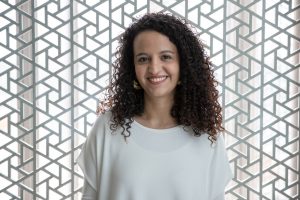
Mounia Chekhab-Abudaya is since 2012 the Curator for North Africa and Iberia at the Museum of Islamic Art, Doha, Qatar, where she curated several exhibitions. She completed her Ph.D. in Islamic Art History and Archaeology at the Pantheon Sorbonne University in Paris and is specialized on the Western Mediterranean, manuscripts and pilgrimage-related devotional materials in the Islamic world. In 2017-2018, Mounia Chekhab-Abudaya has undertaken a research project in Harvard University as a post-doctoral research associate. Dr. Chekhab-Abudaya holds a degree in Literal Arabic from the National Institute of Oriental Languages and Civilizations (INALCO) and taught Islamic Art at undergraduate and graduate levels at the Pantheon Sorbonne and INALCO.

Marika Sardar, Curator at the Aga Khan Museum in Toronto, has worked previously at the Museum of Islamic Art in Doha, the San Diego Museum of Art and the Metropolitan Museum of Art. Her area of specialization is the art of the Deccan region of India, resulting in the 2015 exhibition Sultans of Deccan India, 1500-1700: Opulence and Fantasy. Her research has also extended to trade from the Islamic world and the excavations at Nishapur, Iran; in addition, she is currently preparing, with John Seyller, a publication of the Ramayana of Hamida Banu Begum in the MIA collection. She received a PhD from the Institute of Fine Arts, New York University.

Tara Desjardins studied Art History at Skidmore College, New York. She has an MA in Art Business from the Sotheby’s Institute of Art, London (2007) and a PhD in Mughal Glass from SOAS, University of London (2018). She worked in the art market in Paris as an Islamic Art specialist for six years before joining the museum world, and has since worked at the British Museum, San Diego Museum of Art and the Victoria & Albert Museum. She is currently the EMU Project curator at the Museum of Islamic Art, Doha.
Panel 8: Encompassing the Eastern Periphery of the Muslim World: Islamic Art and Material Culture in East Asia
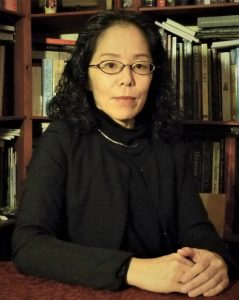
Panel Chair: Yuka Kadoi, PhD, is a historian of Islamic and Asian art, currently running an FWF-sponsored project on the history and historiography of Persian art at the Institute of Art History, University of Vienna. With the dual background of Middle Eastern and East Asian art histories, she is the author or the editor of several books and numerous articles, including Islamic Chinoiserie: The Art of Mongol Iran (2009; paperback, 2018); The Shaping of Persian Art (co-edited with Iván Szántó, 2013); Arthur Upham Pope and A New Survey of Persian Art (2016); and Persian Art: Image-making in Eurasia (2018). She has also curated several exhibitions of Islamic art (Chicago 2010, Edinburgh 2014 and Hong Kong 2018).
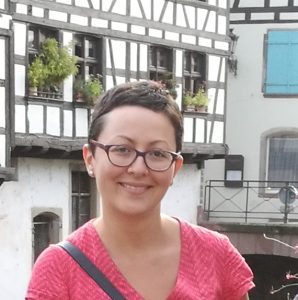
Nourane Ben Azzouna holds a PhD in Islamic Art History from the Ecole Pratique des Panel Hautes Etudes, Paris. Her research focuses on the history of the Arabic and Persian book from a holistic perspective, including the study of codicology and paleography in various levels and circles of production in the medieval period. She is the author of a monograph titled Aux origines du classicisme: Calligraphes et bibliophiles au temps des dynasties mongoles (Les Ilkhanides et les Djalayirides, 656-814 / 1258-1411) (2018). She is also the co-author, with Markus Ritter, of a monograph on the Golden Qurʾan in Munich (2015).

Marco Caboara is Digital Scholarship and Archives Manager at the Lee Shau Kee Library, Hong Kong University of Science and Technology. As Archives Manager, he is also in charge of the Library Special Collections, most prominently of the Antique Maps of China Collection. He studied in Italy, Taiwan, Beijing and Hong Kong, and received a PhD from the University of Washington, Seattle, with a study of the linguistic features of Classical Chinese Bamboo Manuscripts. He has been a Research Fellow at Friedrich-Alexander-Universität Erlangen-Nürnberg and the Swedish Collegium for Advanced Studies in Uppsala. He is currently working on a comprehensive carto-bibliography of Western printed maps of China from 1580 to 1799, to be published by Brill.

Iván Szántó, PhD, is Associate Professor and Departmental Head of Iranian Studies at the Eötvös Loránd University (ELTE), Budapest, Hungary. He served as a researcher at the Institute of Iranian Studies, Vienna, Austria (2010-2017), working on a project to contextualize Islamic, chiefly Persian, art collections in Central Europe. In spring 2018, he was a resident scholar at the Getty Research Institute in Los Angeles. His research interest covers diverse aspects of Iranian art history in the Islamic period, as well as Iranian artistic interactions with neighboring regions. His major publications include Safavid Art in Hungary: The Esterházy Appliqué in Context (2010).
